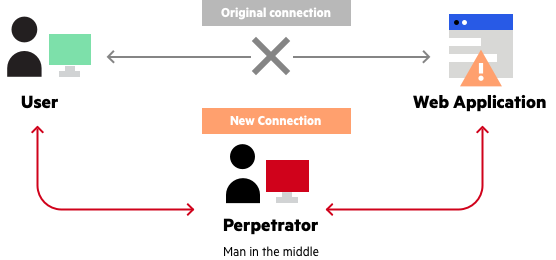10 Best Game-Hacking Apps For Android in 2023
1. AndroRAT
AndroRAT is a Windows-based tool for users who want simple and efficient software to control Android devices remotely. One can activate the software and connect their tablet or smartphone to the system the app is downloaded on. Then, the software allows users to add a port number or IP address to connect to the secondary device remotely.
The programs run on Java, which the developers used to upgrade the software from the previous version. The newer version comes with rich features like GPS location monitoring, contact information checking, access to a list of all sent/received messages, call logs checking, taking camera photos, and more.
2. HackerBot
This game-hacking software helps offer software patches for gaming software, operating as an Android-based Cheat Engine. This is because of the wide range of information available on this app for gameplay-related details, like tips, cheats, and tricks across different platforms.
These tutorial tips work on allowing game access to users with easy usability guaranteed, regardless of where it is played, like Windows, PlayStation, or Xbox. You can access the APK installer, search for modeled APKs and legal tricks, find cheats via captcha, fake data, etc. This app offers a cheat sheet guide for diverse games, like PUBG, Garena Free Fire, etc.
3. cSploit
Another outstanding choice in this list of the best game-hacking apps for Android is cSploit. While it is not a traditional type of application, this Android network analysis/penetration suite aims towards the improved productivity of IT security professionals.
These experts get this toolkit of resources for diverse types of network security assessment runs via Android smartphones. After users activate the program, it becomes easy to map their network, search the system for vulnerabilities, and handle real-time web traffic manipulation, among others.
4. Xmodgames
This is a capable game-hacking app that users can use to find and then add mods to Android-based games like Subway Surfers, Clash of Clans, Minecraft, Clash Royal, etc. This software allows users to access and utilize the built-in screen recording functionality for gameplay recording. Furthermore, users can also capture screen grabs and share them directly via Xmod discussion threads.
Streamers can utilize the app to access data about games and use its functions. However, it is essential to mention that the app is accessible only on some established devices and is essentially an amusement collaboration-centric portable app.
5. DroidSheep
DroidSheep is an Android-centric hacking app that handles quick and intensive WiFi traffic auditing processes. It can efficiently evaluate the available data to properly study and capture crucial data from online services, like passwords or game access protocols.
The app helps read all available data packets users receive or send across one connected WiFi network on their device. The app adopts an ethical hacking functionality and does not allow the unauthorized acquisition of other users’ details or passwords.
6. Lucky Patcher
Another notable Android-based game-hacking app that is worth mentioning is Lucky Parcher. This application allows users to access and modify the specifications of installed games and apps. While operating the software, users can access apps surpassing the license limitations in place, including new features, removing ads, etc.
The ability to remotely activate premium-level features and upgrade gameplay benefits by changing app permissions makes this app highly valuable to Android users. Again, this APK software follows ethical rules for its practices, assuring usage safety for all.
7. Game Killer
This Android app for game hacking is a full-scale guide to game cheat sheets for different game types. Users operating this APK on their Android devices can access a comprehensive list of cheat codes and gameplay command information for varying games with high difficulty levels.
Gamers can activate this app’s functionality and access the app they installed offline. Following that, it is helpful to use the unlimited number of commands and values that will come up for cracking all game sequence parts. However, you need to root the Android device beforehand and use this app only with offline games.
8. GameGuardian
Android users can operate the GameGuardian app to access different games on their smartphone or tablet and operate it smoothly. After installing the APK installer, one has to access the app and allow it to work in the background while playing the game on an Android smartphone. Using this app, games can trick the internal time counting mechanism of the app by mocking the waiting time passage period. This way, the software counts the new set time as the overall time spent, adjusting the player’s level accordingly.
For example, this is useful for games like Criminal Case, where users must wait for evidence analysis to complete. You can pass the time and acquire objects faster by activating this app.
9. Cheat Engine
Cheat Engine is constantly maintaining popularity as one of the top apps to hack Android games a few times. This app has come up with regular modifications, making it capable enough to manipulate many popular applications and games. It effectively works on debugging problems people experience with those games and modifying the problematic settings of the single-player games. With Cheat Engine, a gamer can change the difficulty setup of different single-player games.
Cheat Engine can be used for debugs, speed hacks, direct 3D manipulation, disassembler, assembler, system inspection, and so on. Furthermore, it is worth noting that the new users will find the in-build tutorial to understand how it works.
10. Leo Playcard
Leo Playcard is one of the best hacking apps for Android you can find on the internet. You do not have to pay a single penny to download this powerful app. Furthermore, a great feature of Leo PlayCard is that it allows its users to download paid android gamers free of cost easily. Besides this, an individual can use or integrate the app to manipulate famous games such as Temple Run. It also helps its users increase the number of their gems, lives, or cards in the game.
With Leo Playcard, users can hack into the stable functioning or different games, like Temple Run. After that, one can easily manipulate the software to give them more rewards than standard gameplay. For example, you can get more episode passes for offline RPG games and lives/gems/game coins (Temple Run).















